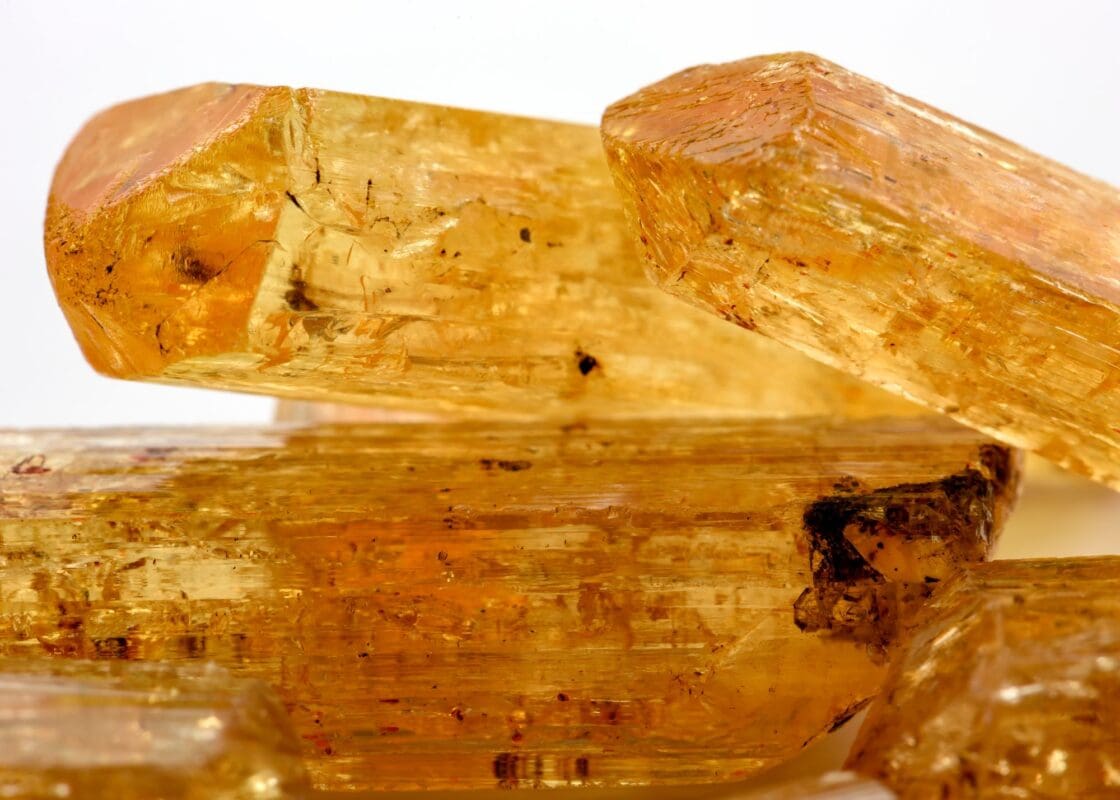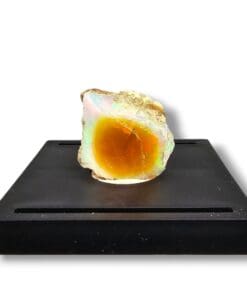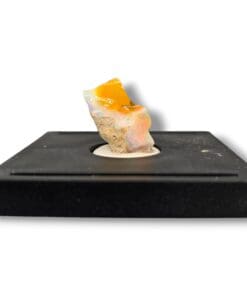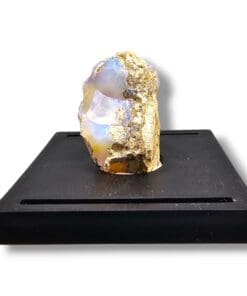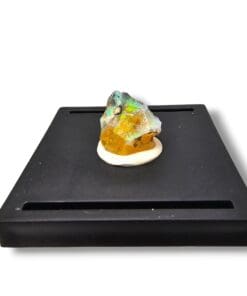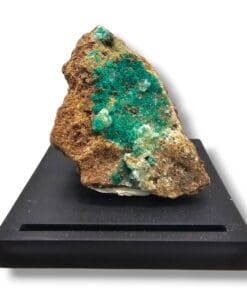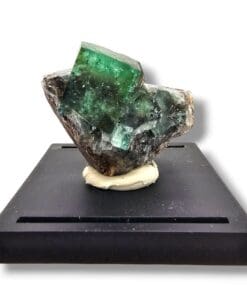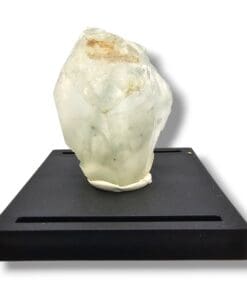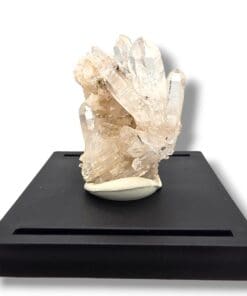Topaz: Unveiling the Splendor of a Collector’s Gemstone
Introduction
Have you ever been captivated by the vibrant hues of Topaz, a gemstone that spans the spectrum from fiery oranges to cool blues? This exquisite gem, a favorite among collectors and jewelers, is renowned not only for its beauty but also for its fascinating history and rarity. In this comprehensive guide, we explore the world of Topaz, delving into its rich past, diverse colors, and the qualities that make it a prized possession in collections worldwide.
Historical Significance of Topaz
The story of Topaz is as colorful as the stone itself, with a history that dates back to ancient civilizations. Revered by Egyptians for its supposed protective powers and the Romans for its healing properties, Topaz has been a gemstone of significance and value across various cultures. It was often associated with luxury and status, adorning the jewelry and artifacts of kings and emperors.

Geological Formation and Properties of Topaz
Topaz is a silicate mineral of aluminum and fluorine, formed in igneous rocks and crystallized from fluorine-bearing vapors during the final stages of magma cooling. It ranks 8 on the Mohs scale of hardness, making it both durable and suitable for various jewelry applications. Topaz is unique in its wide color range, which includes blue, yellow, pink, red, and colorless varieties. The color of Topaz is often due to impurities or treatments, as natural stones are typically colorless or lightly tinted.
Rarity, Collector’s Perspective, and Identifying Authentic Topaz
Rarity and Value in the Collector’s Market: Topaz, especially in its natural form, holds a special allure for gemstone collectors. While certain colors of Topaz, like blue, are widely available due to treatments, naturally colored gems, particularly in shades like pink or the prized Imperial Topaz, are much rarer and command higher prices. The rarity of these natural colors significantly contributes to the value of Topaz in the collectors’ market.
Identifying Genuine Topaz: Distinguishing authentic Topaz from imitations or treated stones is crucial for collectors. Genuine Topaz typically has a distinct crystal structure and hardness (8 on the Mohs scale), which is a key identifier. It should not display any bubbles, a common feature in glass imitations. Also, natural Topaz often has unique inclusions or flaws, unlike synthetic counterparts.
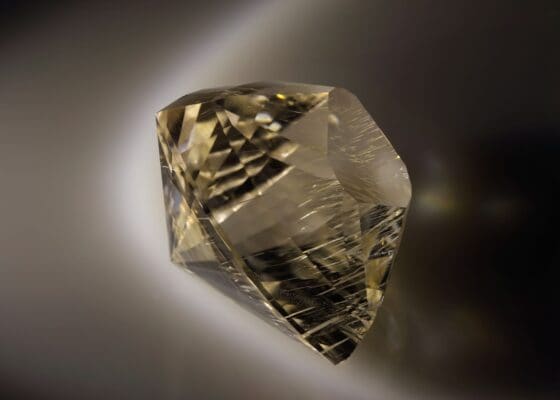
Characteristics of High-Quality Topaz: The value of high-quality Topaz is determined by its color, clarity, cut, and carat weight. Natural Topaz with a clear, intense color and minimal inclusions is highly prized. The most sought-after variety, Imperial Topaz, displays a rich orange with pink undertones. Well-executed cuts that enhance the stone’s natural brilliance add appeal and value.
Market Value of Topaz
Current Market Value: The market value of Topaz varies greatly, with the most significant factor being its color. Treated blue Topaz is relatively affordable, while rare colors like natural pink, red, or Imperial Topaz can fetch high prices. The size and quality of the gem also play critical roles in determining its value.
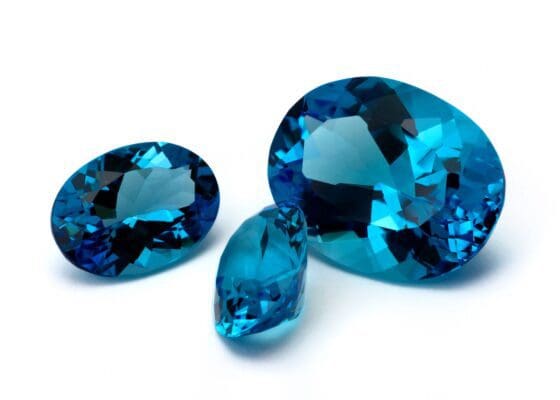
Factors Influencing Price: Besides color, clarity is a major price determinant. Clear stones with few inclusions are more valuable. The rarity of Topaz’s specific color and its cut quality can also significantly impact its price.
Major Locations and Mining of Topaz
Key Mining Locations: Topaz is mined in several countries, with major sources including Brazil, Pakistan, Russia, The United States, and Nigeria. Brazil is renowned for producing vast quantities of Topaz, including the highly coveted Imperial Topaz.
The Rarity of Topaz in Different Regions: The rarity of different types of Topaz varies by location. For instance, the Ural Mountains in Russia are known for producing pink Topaz, while Brazil’s Minas Gerais region is famed for Imperial Topaz. Each region’s unique geological conditions contribute to the formation of specific Topaz varieties, influencing their rarity and value.
Uses and Applications of Topaz
Topaz in Jewelry and Decorative Arts: Topaz has long been a beloved gemstone in the world of jewelry and decorative arts. Its range of colors, from vibrant blues to warm yellows and pinks, makes it a versatile choice for various jewelry designs. Topaz is commonly used in rings, earrings, necklaces, and bracelets, where its brilliance and clarity can be showcased. In decorative arts, especially in historical and royal collections, Topaz is often found in intricately crafted pieces, from ornamental objects to ceremonial items.

Unique Applications in Various Industries: Beyond its aesthetic appeal, Topaz has practical applications in various industries. Due to its hardness and durability, it’s occasionally used in industrial applications for making abrasives and cutting tools. In the past, finely cut Topaz was used in optical instruments due to its clarity and ability to refract light.
Metaphysical Properties, Beliefs, and Symbolism
Insight into Metaphysical Beliefs: In the realm of metaphysical beliefs, Topaz is often associated with benefits such as bringing joy, generosity, abundance, and good health. It is believed to promote openness and honesty, aiding in the manifestation of goals and intentions.
Topaz as a Spiritual and Healing Stone: Topaz is thought to have healing properties, particularly in relieving stress and fostering a sense of calm. Different colors of Topaz are believed to have different healing attributes; for example, blue Topaz is often associated with mental clarity and communication, while golden Topaz is linked to attracting wealth and abundance.
Symbolism and Folklore Associated with Topaz: Across various cultures, Topaz has been a symbol of opulence and luxury. It is also associated with strength and intelligence. In folklore, Topaz is often seen as a talisman to ward off evil and bring about success and good fortune.
Topaz in Jewelry
Usage in Jewelry Making: In jewelry making, Topaz is celebrated for its durability (ranking 8 on the Mohs scale) and its vibrant colors. Jewelers often prefer Topaz for its ability to be cut into a wide variety of shapes and sizes, allowing for flexibility in design. Its brilliance and clarity make it an ideal choice for statement pieces as well as subtle, everyday wear.
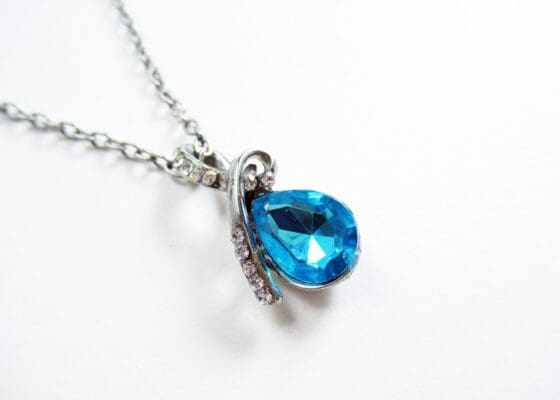
Popular Jewelry Styles: Topaz jewelry ranges from classic, timeless pieces, where its natural beauty is the focal point, to contemporary designs, often combining Topaz with other gemstones to create vibrant and eye-catching pieces. Blue Topaz, in particular, is a staple in modern jewelry, favored for its soothing color and affordability.
Fun Facts and Trivia about Topaz
Ancient Greek Belief: The ancient Greeks believed that Topaz could make its wearer invisible in times of emergency.
Brazilian Legend: In Brazil, there’s a legend that Topaz can change color to protect against poison.
Russian Crown Jewels: A famous Topaz, believed to be a diamond, is found in the Russian Crown Jewels.
Hardness and Durability: Topaz is one of the hardest naturally occurring minerals, making it ideal for jewelry.
Variety of Colors: Although often associated with a golden yellow color, Topaz can be found in a wide array of colors, from blue to pink.
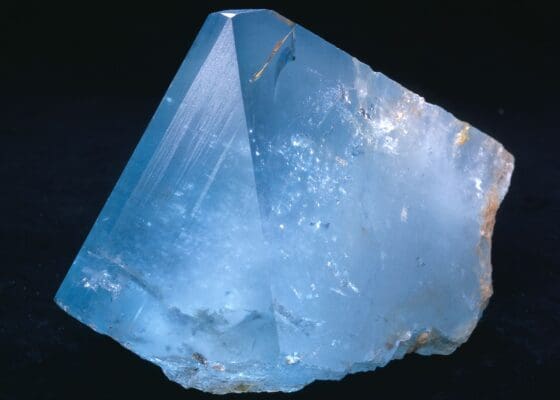
Answers to Top Questions from Google’s ‘People Also Ask’
- Is Topaz expensive?
The cost of Topaz can vary significantly, influenced primarily by its color, clarity, and the way it is cut. Common varieties like blue and yellow Topaz are more affordable due to their availability and the prevalence of treatment methods. However, rare colors, such as natural pink or the coveted Imperial Topaz, which boasts a unique reddish-orange hue, are much rarer and can fetch high prices in the gemstone market, making them a significant investment for collectors and enthusiasts. - What is the rarest color of Topaz?
The rarest and most valuable color of Topaz is the red or pink hue, typically referred to as Imperial Topaz. This particular variety is renowned for its vivid color and exceptional clarity. Imperial Topaz is highly treasured and sought after by collectors and jewelry connoisseurs worldwide, often commanding premium prices due to its rarity and exquisite beauty. - Is Topaz a precious gem?
Topaz is categorized as a semi-precious gemstone. Although it is abundant in nature and less valuable compared to traditionally classified precious stones like diamonds, rubies, sapphires, and emeralds, Topaz is highly valued for its range of colors, clarity, and hardness. Its use in fine jewelry and historical artifacts underscores its significance and desirability. - What is special about Topaz?
Topaz is celebrated for its exceptional hardness (8 on the Mohs scale), making it durable and suitable for various types of jewelry. Its unique range of natural and treated colors, from vibrant blues and pinks to warm yellows and browns, adds to its appeal. Historically, Topaz has been valued for both its aesthetic qualities and its metaphysical properties, believed to bring benefits such as strength, intelligence, and protection to its wearer. - Who should not wear Topaz?
While there is no universal restriction on wearing Topaz, astrological beliefs sometimes suggest that certain gemstones may not be suitable for everyone, depending on one’s zodiac sign or energy. It’s often recommended to consult with an astrologer or gemologist to determine if a particular gemstone like Topaz aligns well with an individual’s astrological profile. - What is the true color of Topaz?
Natural Topaz is most commonly colorless or lightly tinted when it is formed. However, it can exhibit a range of colors due to natural impurities or through treatments. Heat treatment and irradiation can transform colorless Topaz into vibrant shades of blue, a common practice in the gemstone industry. The presence of various trace elements can also give Topaz different natural colors, including yellow, orange, and even rare pinks and reds. - What does it mean if your birthstone is Topaz?
Having Topaz as your birthstone, particularly for November, symbolizes love, affection, and gratitude. It is believed to bring strength and intelligence to those who wear it, along with fostering success and good fortune. The warm glow of Topaz is thought to reflect the wearer’s inner warmth and generosity. - What does blue Topaz symbolize?
Blue Topaz is often associated with tranquility, calmness, and peacefulness. It symbolizes clear communication, creativity, and mental focus. Many believe that wearing blue Topaz can aid in expressing oneself more clearly and creatively, making it a popular choice for artists, writers, and communicators. - Which zodiac should wear blue Topaz?
Blue Topaz is particularly beneficial for individuals born under the zodiac signs of Sagittarius and Scorpio. For Sagittarians, it is believed to bring truth, wisdom, and expanded consciousness, enhancing their natural quest for knowledge and adventure. For Scorpios, blue Topaz can aid in communication and emotional expression, complementing their deep and introspective nature. - What is the folklore of Topaz?
Topaz has a rich history of folklore and legends, often regarded as a stone of strength and protection. It was believed in many cultures to have the power to ward off evil and enchantment. The ancient Greeks believed that Topaz could increase strength and make its wearer invisible in times of emergency. In other traditions, Topaz was thought to improve eyesight and mental clarity. - Why is blue Topaz so cheap?
Blue Topaz is more affordable compared to other gemstones due to the effectiveness and prevalence of treatment methods that transform colorless or lightly colored Topaz into the desirable blue hue. The relative abundance of natural Topaz used for these treatments contributes to the accessibility and lower price of blue Topaz, making it a popular choice for those seeking the beauty of a precious gemstone at a more economical price point.
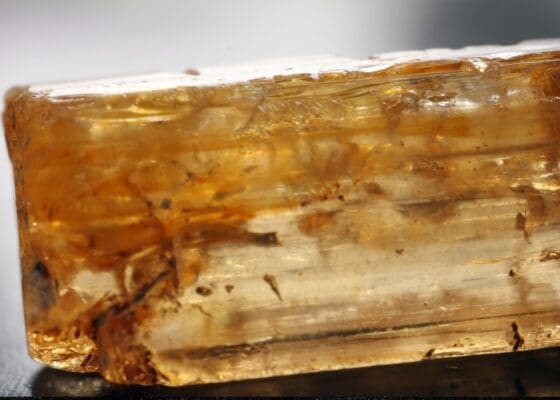
Topaz Quiz for Collectors and Enthusiasts
Test Your Knowledge on Topaz!
- What is the rarest color of Topaz?
A) Blue
B) Pink
C) Red - On the Mohs scale of hardness, where does Topaz rank?
A) 6
B) 8
C) 10 - Which country is famous for producing Imperial Topaz?
A) Brazil
B) Russia
C) Australia - What treatment is commonly used to create blue Topaz?
A) Dyeing
B) Heat treatment and irradiation
C) Chemical coating - Metaphysically, what is Topaz believed to promote?
A) Wealth
B) Strength and intelligence
C) Love and affection
Check your answers below and see how well you know Topaz! Whether you’re a seasoned collector, a gem enthusiast, or interested in the metaphysical aspects, Topaz offers a world of intrigue and beauty. Share your score in the comments and join the conversation about this fascinating gemstone!
Conclusion
As we reach the end of our journey exploring the vibrant world of Topaz, we are left with a deep appreciation for this gemstone’s unique beauty and its significant role in both history and modern gemology. Topaz, with its array of colors and its rare Imperial variety, stands as a testament to nature’s artistry. Its allure lies not just in its aesthetic appeal but also in the stories and legends that have been woven around it through the ages. From ancient symbols of strength and protection to modern symbols of love and intelligence, Topaz continues to fascinate and captivate collectors and enthusiasts alike.
-
 Exquisite Ethiopian Opal Gemstone from Ethiopia
Exquisite Ethiopian Opal Gemstone from Ethiopia$34$31 -
 Delicate Ethiopian Opal from Ethiopia
Delicate Ethiopian Opal from Ethiopia$24$22 -
 Stunning Ethiopian Opal – Your Hydrophane Gem from Ethiopia
Stunning Ethiopian Opal – Your Hydrophane Gem from Ethiopia$60$54 -
 Captivating Ethiopian Opal Specimen – Pristine Display from Ethiopia
Captivating Ethiopian Opal Specimen – Pristine Display from Ethiopia$24$22 -
 Striking Dioptase with Quartz Matrix from Shaba, Zaire
Striking Dioptase with Quartz Matrix from Shaba, Zaire$40$36 -
 Vibrant Fluorescent Green Fluorite Cluster from Rogerley Mine, England
Vibrant Fluorescent Green Fluorite Cluster from Rogerley Mine, England$55$50 -
 Green Quartz Crystal from Boyaca, Colombia – Pristine Mineral Display
Green Quartz Crystal from Boyaca, Colombia – Pristine Mineral Display$44$40 -
 Pink Lemurian Quartz Cluster from Santander, Colombia
Pink Lemurian Quartz Cluster from Santander, Colombia$40$36 -
 Exquisite Mango Quartz Cluster from Boyaca, Colombia
Exquisite Mango Quartz Cluster from Boyaca, Colombia$32$29
For those who are enthralled by the enchanting world of Topaz and wish to own a piece of this timeless beauty, we invite you to explore our diverse collection of Topaz products. From elegant jewelry pieces showcasing the gemstone’s brilliant colors to unique collector’s items, our selection caters to all tastes and preferences. Discover the perfect Topaz for you in our Topaz Collection.
Related Rocks and Minerals
Expand your gemstone knowledge and collection with these related topics and products:
- Sapphire: Explore the deep blues and other colors of this precious gemstone.
- Aquamarine: Delve into the serene and calming hues of Aquamarine, a cousin of Topaz in the beryl family.
- Citrine: Uncover the vibrant yellow and orange shades of Citrine, a quartz mineral often associated with wealth and abundance.
- Amethyst: Discover the rich purples of Amethyst, a gemstone known for its spiritual and healing properties.
- Garnet: Learn about the diverse color range and historical significance of Garnet, from deep reds to vibrant greens.
References and Further Reading
For more in-depth information on Topaz, consider these credible sources:
- Gemological Institute of America (GIA): Offering detailed insights into Topaz’s properties, history, and grading.
- Minerals.net: Providing comprehensive mineralogical information about Topaz.
Additionally, enhance your understanding of gemstones by exploring our related articles:
- [The Colorful World of Gemstones: A Collector’s Guide] – Coming Soon
- [Understanding Gemstone Treatments and Enhancements] – Coming Soon
Answers to the Quiz:
- Answer: C) Red
- Answer: B) 8
- Answer: A) Brazil
- Answer: B) Heat treatment and irradiation
- Answer: B) Strength and intelligence

